Students will produce P and S waves using a Slinky© to understand how seismic waves transfer energy as they travel through solids. All types of waves transmit energy, including beach waves, sound, light, and more. When an earthquake occurs it generates four different types of seismic waves). We will focus on two of these: Compressional-P (longitudinal) and shearing-S (transverse) “body waves.” These travel through the Earth with distinct particle motion and predictable speed.
Near the surface P waves travel at ~6km/s, that is 21,600 km/h, which is something like 13,400 miles per hour through solid rock, compressing and dilating the Earth in the direction they are propagating, much like sound waves do. They also travel 60% faster than the shearing S waves. It is this velocity difference that helps seismologists locate an earthquake’s epicenter.
By the end of the exercise, students should be able to:
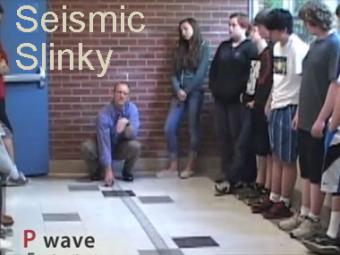
A video demonstration of how a slinky can be a good model for illustrating P & S seismic waves movement.
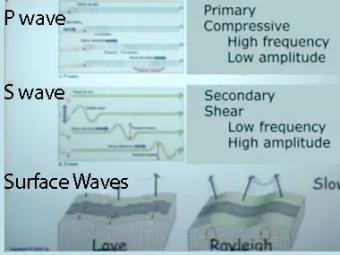
Video lecture on wave propagation and speeds of three fundamental kinds of seismic waves.
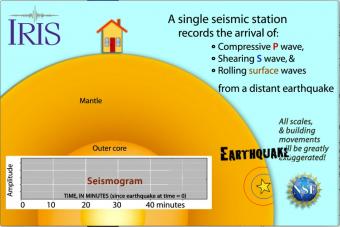
Seismic waves travel through the earth to a single seismic station. Scale and movement of the seismic station are greatly exaggerated to depict the relative motion recorded by the seismogram as P, S, and surface waves arrive.
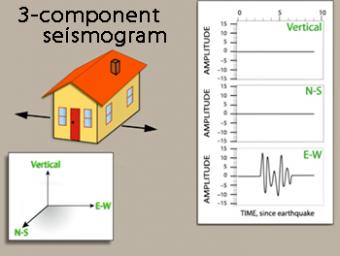
We use exaggerated motion of a building (seismic station) to show how the ground moves during an earthquake, and why it is important to measure seismic waves using 3 components: vertical, N-S, and E-W. Before showing an actual distant earthquake, we break down the three axes of movement to clarify the 3 seismograms.
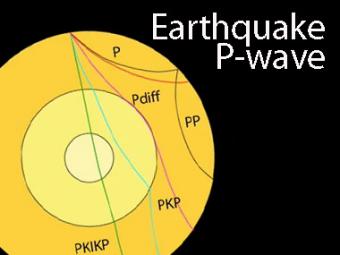
The shadow zone is the area of the earth from angular distances of 104 to 140 degrees from a given earthquake that does not receive any direct P waves. The different phases show how the initial P wave changes when encountering boundaries in the Earth.
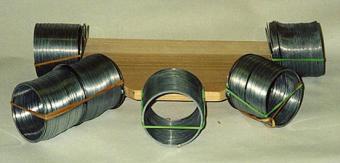
The slinky is an effective tool for the demonstration seismic wave characteristics and wave propagation. Slinkys can be used both individually and in various combinations to demonstration different concepts.
We encourage the reuse and dissemination of the material on this site as long as attribution is retained. To this end the material on this site, unless otherwise noted, is offered under Creative Commons Attribution (CC BY 4.0) license